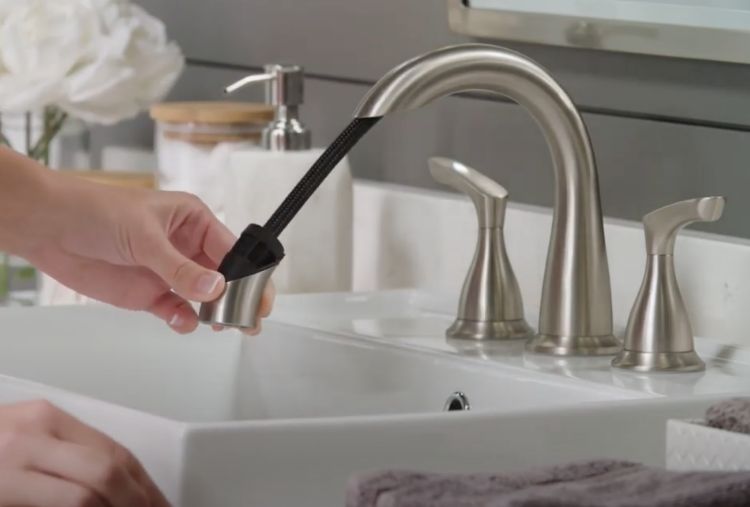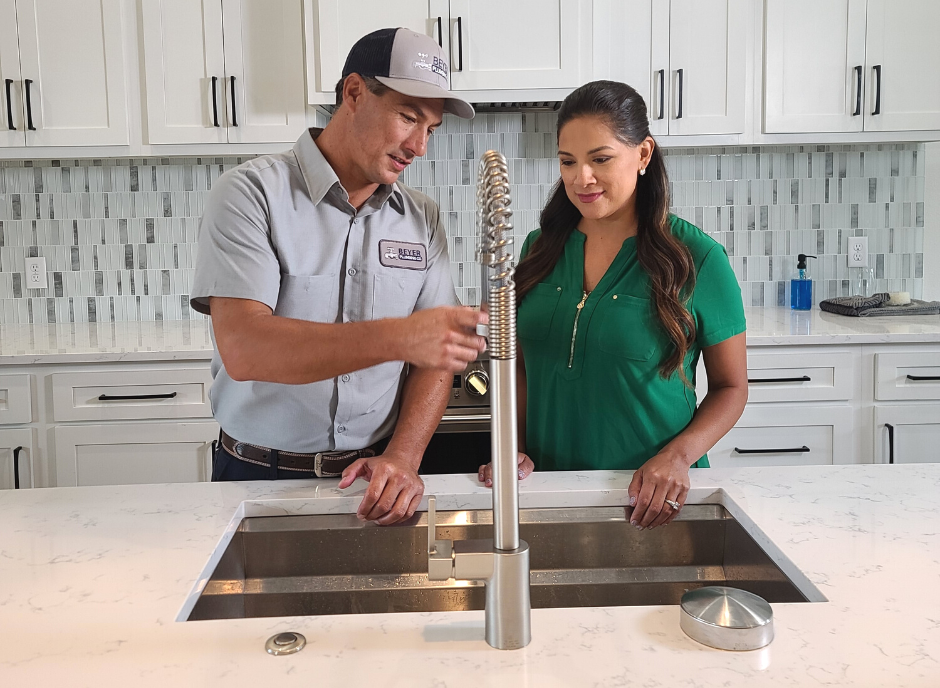Understanding the Value of Addressing a Faulty Faucet
Understanding the Value of Addressing a Faulty Faucet
Blog Article
How do you feel about Should I Repair or Replace a Leaky Faucet??

Trickling faucets might look like a minor aggravation, yet their influence exceeds just the inconvenience of the sound. From drainage to sustaining unnecessary economic expenses and health and wellness risks, overlooking a leaking tap can cause various effects. In this post, we'll delve into why it's critical to address this usual household problem promptly and efficiently.
Wastefulness of Water
Environmental Influence
Dripping faucets add significantly to water waste. According to the Epa (EPA), a solitary tap dripping at one drip per second can lose greater than 3,000 gallons of water each year. This not just strains water resources but also impacts environments and wild animals depending on them.
Step-by-Step Overview to Dealing With a Dripping Tap
Devices Needed
Before attempting to repair a dripping tap, collect the needed tools, including an adjustable wrench, screwdrivers, substitute components (such as washers or cartridges), and plumber's tape.
Common Faucet Issues and Their Solutions
Recognize the sort of faucet and the certain issue causing the drip. Common problems include damaged washing machines, rusty shutoff seats, or faulty O-rings. Describe manufacturer guidelines or online tutorials for step-by-step advice on fixings.
Financial Expenses
Raised Water Expenses
Past the ecological influence, trickling taps can blow up water costs substantially. The accumulated waste in time equates into greater energy expenditures, which might have been avoided with timely repair work.
Possible Residential Or Commercial Property Damages
Furthermore, prolonged trickling can result in harm to fixtures and surfaces surrounding the faucet. Water accumulation can trigger staining, deterioration, and also structural concerns if left ignored, causing added repair service prices.
Health and wellness Problems
Mold and Mold Development
The continuous existence of moisture from a leaking tap creates an excellent environment for mold and mildew development. These fungis not just compromise interior air top quality but also position health and wellness dangers, particularly for individuals with breathing conditions or allergies.
Waterborne Illness
Stagnant water in dripping faucets can become a breeding ground for microorganisms and various other virus, boosting the danger of waterborne diseases. Contaminants such as Legionella microorganisms grow in stagnant water, potentially leading to significant health problems when ingested or breathed in.
Do it yourself vs. Professional Fixing
Benefits and drawbacks of Do It Yourself Repair
While some might attempt to repair a dripping faucet themselves, DIY fixings feature their very own collection of difficulties. Without correct understanding and tools, DIY attempts can exacerbate the issue or lead to insufficient repairs, prolonging the trouble.
Benefits of Hiring an Expert Plumber
Employing a specialist plumber makes sure that the underlying reason for the leaking tap is resolved successfully. Plumbings possess the know-how and equipment to detect and fix faucet issues efficiently, saving time and reducing the danger of more damages.
Ecological Obligation
Specific Contribution to Conservation
Taking responsibility for repairing dripping faucets lines up with more comprehensive initiatives towards water conservation and environmental sustainability. Every individual's activities jointly make a considerable impact on maintaining valuable sources.
Sustainable Living Practices
By focusing on timely repairs and embracing water-saving habits, people contribute to sustainable living techniques that benefit both existing and future generations.
Preventive Measures
Routine Upkeep Tips
To prevent leaking taps, perform routine upkeep such as cleansing aerators, examining for leakages, and changing damaged parts quickly. Furthermore, take into consideration installing water-saving devices or upgrading to a lot more reliable components.
Relevance of Prompt Services
Dealing with leaking faucets as soon as they're discovered avoids further water wastage and potential damages, inevitably conserving both water and money over time.
Impact on Building Worth
Understanding of Well-Maintained Home
Preserving a residential property in good condition, including addressing upkeep issues like trickling taps, enhances its viewed worth and charm among prospective customers or tenants.
Influence on Resale Worth
Features with properly maintained plumbing components, including faucets, command greater resale worths in the property market. Addressing trickling faucets can add to a favorable impact throughout home examinations and settlements.
Conclusion
Addressing a trickling faucet surpasses simple comfort; it's an essential action towards saving water, reducing monetary costs, and securing health and wellness and home. Whether through do it yourself repair work or professional support, taking action to deal with dripping taps is a little yet impactful way to promote responsible stewardship of sources and contribute to a healthier, more lasting future.
How to Fix a Leaky Faucet: Step-by-Step Repair Guide
A leaky faucet may seem like a simple annoyance, but if it's not fixed promptly, that leak could cost hundreds to potentially thousands. From water damage to mold, mildew, and high water bills, even a tiny leak can be catastrophic if left unattended. Damage like this can even affect the overall value of your home, so it's important to take the right approach for leaky faucet repair. You may need the help of a plumber in some cases, but we've got a few tips you can try on how to fix a leaky faucet before calling the pros.
Four Faucet Types
When you're learning how to fix a leaky faucet, the first step is knowing what kind of faucet you're working with! There are four common types.
Cartridge Faucets
Cartridge faucets come in one- or two-handled varieties. In one-handled cartridge faucets, hot and cold water combines in a single cartridge. In the two-handled versions, hot and cold water are controlled separately and mixed in the faucet.
Ball Faucets
Ball faucets have a single lever you push up and down to adjust the pressure and rotate to change the temperature. A slotted metal ball controls the amount of water allowed into the spout.
Compression Washer Faucets
They're the oldest type of faucet, but they're still used in many homes — especially older ones. Compression faucets have two separate handles that, when turned, raise or lower the washer that seals a water valve. This valve stops water from flowing through the faucet when it is turned off.
Disc Faucets
Disc faucets rarely need to be repaired due to their maintenance-free design. The water flow is controlled by two discs — the upper one raises and lowers against a fixed lower disc, creating a watertight seal. If your disc faucet starts leaking, you may need to replace the seals or clean residue buildup from the inlets.
Fixing a Leaky Faucet
Step 1: Turn Off the Water
Whether you're learning how to fix a leaky bathtub faucet or how to fix a leaky kitchen faucet, always turn off the water supply to your working area when you're fixing a leak. The last thing you want is a flood added to your list of things to fix.
Look for the shutoff valves below your sink or around the tub and turn them clockwise to stop the water flow. If your faucet doesn't have shutoff valves, you may need to turn off the water for the whole house. Check to make sure it's off by turning the faucet on. If nothing comes out, you're ready to start the repair.
Step 2: Take Apart the Faucet
How you disassemble your faucet depends on the type of fixture you have. You can use a flathead screwdriver to remove the caps on top of the handle or handles for cartridge and compression faucets. Inside, you should see handle screws. Unscrew these with a screwdriver to remove the handle.
Disc- and ball-style faucets will typically have an inlet screw near the handle, and removing that will reveal the interior of the faucet.
Detach the Valve Stem
For cartridge- and compression-style faucets, you'll see the inner valve stem or cartridge once you remove the faucet handles. If you have a compression faucet, unscrew the brass valve stem. If you have a cartridge faucet, pull out the cartridge. If your cartridge has been in place for a while, it may require some tools or extra force to remove it due to mineral deposits.
Examine and Replace Parts
Once you've removed the parts, check them out to confirm what needs to be replaced. You may see corroded rubber washers, O-rings, stems, or cartridges. On a ball-style faucet, check the seats and springs for damage.
If you need to repair a leaky disc faucet, check the inlet and seals on the lower disc.
Once you determine what parts must be replaced, visit your local hardware store. Bring the damaged parts with you to ensure you can purchase the correct components to replace them.
Clean Valves and Faucet Cavity
If you've removed a stem or cartridge, you may notice mineral buildup in the faucet's threads. Use white vinegar to clean the valve seat by soaking it for a few minutes, then scrub it away with a soft toothbrush and rinse with warm water. You can also clean the interior of the faucet in the same way.
Reassemble the Faucet
Once your faucet is cleaned and the required parts have been replaced, it's time to reassemble it. Put the pieces back together and slowly turn the water supply back on. Doing this slowly is crucial because too much initial water pressure can damage the new hardware you've just installed.
https://homewarranty.firstam.com/blog/how-to-fix-leaky-faucet

We had been shown that write-up about Leaky Faucets: Why They Happen & What to Do About Them from a buddy on our other site. Are you aware of somebody who is very much interested in the subject? Please feel free to share it. Thanks a bunch for being here. Return soon.
Report this page